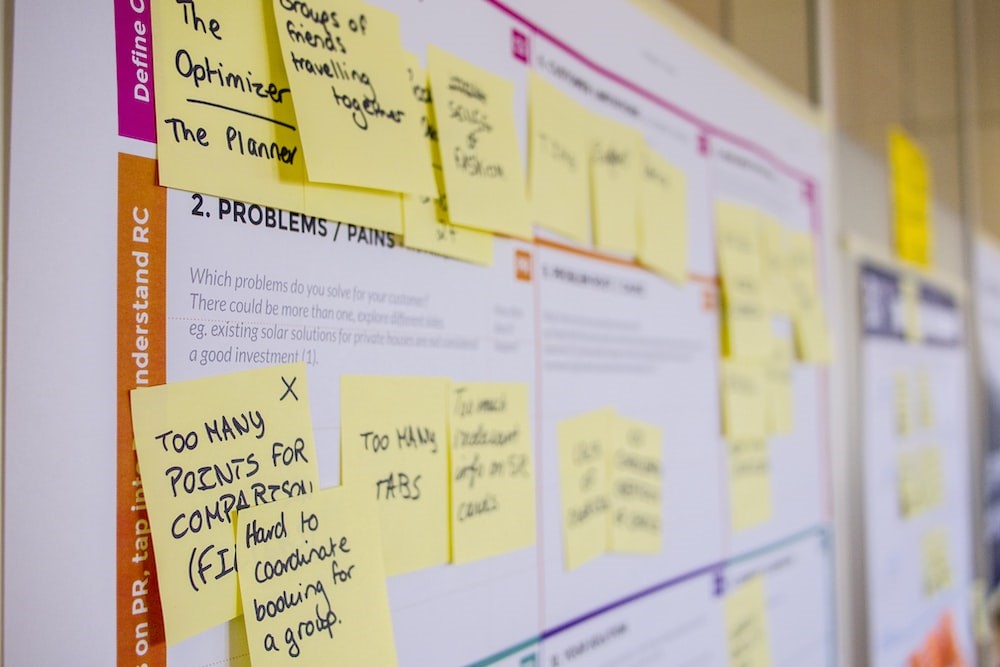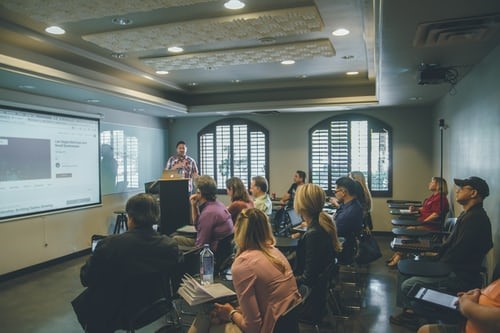Table Of Content
Agile Teams Traits That Set Them Apart from Regular Product Development Teams
Nowadays the concept of agile project management has become quite prevalent in the software development industry. But it isn’t just software development teams who are using it today. Different organizations from vastly different fields are employing the agile team characteristics within their work processes.
And why shouldn’t they? When we take an in-depth look at the basic tenets of agile management, we see that there are a lot of similarities successfully managing a team of, let’s say video animators, and a software development team. As the primary focus of agile is better, more streamlined workflows with better accountability and failsafe.
So, before we move on further from the topic, let’s understand what is an agile team, and how can we build one for our custom software development company.
Agile Team – What Does It Mean?
An agile team is one that takes a problem, and finds a solution to it via systematic planning, strategies, and a tried-and-true approach. It does so by first breaking the problem down into its constituents, and then taking each part as a separate task to be accomplished, finishes the whole job.
Now, in a problem tackled by an agile team, finishing a constituent task requires more than just finishing it. Each task is tested for issues individually, as well as part of the whole. Moreover, the division of a problem into its constituents allows for better planning, where each individual issue of a larger problem is solved more effectively as an individual then it would have been as a whole. Moreover, the tasks and problems are addressed on the basis of the priority, with functional requirements fulfilled before getting onto the value added features.
One of the factors that make agile teams so effective is that every member of the team has a uniform understanding of the problem’s scope, and as such allows team members to back each other up whenever needed. However, there is no set recipe to becoming an agile team.
One of the core duties of an agile team, is the ability to adapt and respond to change. If you are able to tackle that, while using only the resources you have at your disposal, you will be able to form an agile team.
How Can We Build an Agile Team?

There are a few factors that can help you build an agile team. But its more than just hiring the right people. Agile is all about bringing the right workflow processes and strategies to your mode of operation, essentially changing the way you look at a problem in order to solve it more effectively.
Some of the most important factors when building an agile team include:
- Each team member has a tendency to be a team player and help their peers out when needed
- A collective attitude rather than an individualistic approach
- Have the ability to lead when needed, and are able to take ownership of their work
- Can adapt to change and are receptive to taking on different roles based on the task at hand
These factors are essentially the basics of what is expected of an agile team. The most fundamental factor, one that is visible in all of the factors mentioned above too, is a receptive attitude towards change.
So now that we have an idea of how we can build an agile team, let’s take a look at five of the most essential agile team characteristics needed to build an effective agile team.
Five Agile Team Characteristics for Teams Who Prioritize Efficiency
Agile as a concept started out from the software development world, that allowed development teams to create bug-free and feature-rich products in a shorter amount of time. Essentially, it allowed them to change the project of tackling large projects as a whole, and instead breaking them down into fragments, making it easy to identify and rectify issues as soon as they arise by taking each component through the software testing lifecycle.
That is why, the following agile team traits are critical for teams who want to maximize their efficiency.
Unified Expected Outcomes
One of the most important characteristics of an agile team, is their ability to think of agile as a natural way of working, instead of a work process they have to adapt to. To put it simply, agile is a mindset, rather than a work process. If you are able to exemplify the characteristics of agile, you will be able to leverage the maximum benefits offered by it.
Essentially, all team members will have a set of ideal mindsets if they plan to be an effective agile team. They include:
- Respecting all team members, as agile requires collaboration and trust to work effectively
- The drive for continuous improvement. Agile demands that issues be identified and resolved at the earliest stages possible, where the process of iterative sprints comes in handy
- Receptive to feedback for a better product. A solution to the problem at hand, while working, may not be the right one. Feedback from stakeholders like users will help improve it for the better.
Value-Driven Product Development

Agile development is all about maximizing efficiency and effectiveness. A successful agile team will always prioritize the features in order of their impact on the overall product, when planning and addressing the business value at the start of the task.
Once they are done with it, they will extensively test the finished products for issues based on the order of feature priority, before releasing the finished product to the end-users. If a feature low on the priority list is causing issues with the larger project, and if it would cost more to fix it then to keep it or remove it altogether, then the team would opt for the better value option, and vice versa.
Highly Adaptive to Changes
This is one of the most critical agile team characteristics needed for an effective agile team; more like any agile team. Change is something that is inherent in any kind of project, and the team’s ability to handle it and adapt to it is a great asset in their drive to be an effective agile team.
Take, for example, an app development team that uses the Waterfall methodology for their project development. But when they are working to adapt the agile methodology into their workflows, then they will need to rethink their entire strategy for it be successful. That is because traditional software development methodologies are not adaptive. They can be hindrance to the development of a good product.
And that is why agile today is the preferred project management technique used today.
Feedback-Centric Workflows
Agile relies a lot on feedback. The iterative nature of agile methodology demands that each iteration is reviewed and tested extensively, with each new iteration requiring detailed feedback on what needs to be changed.
And it is this exact thing that needs to be improved in order for an agile team to be considered effective. Iterative approaches like Scrum can help agile teams do just that, by incorporating the process of feedback as part of the iteration itself.
Multi-Tier Project Planning

Finally, continuous and multi-tier planning is important for the success of an agile team. From the start of the project, where a project is broken down into its constituents in a feature priority manner. By focusing each iteration into tackling specific components of the product, and planning for the next iteration on the basis of the features’ priorities, the team can ensure that they are able to deliver effective results.
That is the purpose of multi-layer planning in agile. It allows you to deliver a working, feature-rich product while managing the expectations of the stakeholders in an effective manner.
Common Roles in an Agile Team

As we discussed earlier, agile is a fluid concept nowadays in terms of roles, and each organization changes them according to their project requirements. The roles set by a software development team may not be the same as that of a movie production team.
However, the four most common, and prominent roles in an agile team include:
- The Scrum Master
The Scrum Master is essentially; the team lead or team manager. It’s their duty to take ownership of the project, guide the individual teams and team members, plan the entire process, manage available resources, and anything related to finding a solution to the problem effectively.
- The Team Member
The team members are responsible for developing and fulfilling the tasks assigned to them by the Scrum Master, as well as help their team mates with their task when needed. Moreover, they are tasked with delivering their solutions within the assigned deadline.
- The Product Owner
The person in this role is assigned a very important task, that of being the client-dealing face for the team. They are responsible for the fulfillment of the ROIs, backlog management, effective project demos, and other related tasks.
- The Stakeholder
The stakeholders are all those people who have something invested into the product being developed, such as investors, users, management and executive teams, support etcetera.
What Does an Agile Team Do Different Then a Regular Project Development Team?

Unlike a team that uses traditional project management methodologies for their software outsourcing company.
However, considering the changing dynamics of the software development world, they decide that they want to adopt agile team traits in their workflows. But what will the new workflow look like?
Here’s how the agile methodology in project management affects your workflow.
- A distinct product owner will be assigned who will be tasked with handling the project requirements, customer expectations, backlog resolution, and more.
- Once the team lead has a thorough idea of the project requirements, they will call a meeting of all team members, where project details will be shared.
- Besides sharing the details, the product owner will also set deadlines and assign backlogs according to the project requirements shared.
- A designated Scrum master will conduct daily scrum sessions to make sure that the project development is on schedule. This helps resolve any issues of miscommunication or clarifications immediately, ensuring that the deadline is not affected.
- A schedule for regular sprint meetings is set, usually held weekly, where the progress will be shared with the clients and other stakeholders. Moreover, it is also where the next development phase is usually decided.
- Finally, the process continues until the finished project is delivered to the customer.
As evident from the process described above, agile is highly focused on constant communication and feedback, and making changes according to that. And that is what makes so different from traditional methodologies.
Conclusion
The concept of agile is designed to help teams stay on track. It allows development teams to check how each component works at different stages of the development, and taking a step back to rectify any issues that crop up. Traditionally, issues were usually identified right at the end, which made it harder to deliver projects on time.
However, if your team conforms to the agile team characteristics described above, you will be able to improve your efficiency, and productivity easily.
FAQs
| What is a characteristic of a SAFe Agile team? A SAFe Agile team is a multi-purpose group of approximately 5-11 people, who are able to: – Define – Build – Test – Deploy A component of product in a small timeframe. These teams are usually self-reliant, meaning that they usually have the independence to manage their own tasks and timeframes, making them an expert team of individuals. |
| What is the most important of all agile team traits? The uniformity of a shared vision and goals is what makes agile teams so effective. They are experts at making decisions independently, but advancing towards a shared outcome. |
| What makes agile successful? The ability adapt to change easily and quickly is a trait that can help a team overthrow the shackles of rigidness, and follow a fluid mode of project management to develop products more attuned to the end-users’ needs. |
Empower your digital initiatives with BariTechSol, a premier custom software development company. Our skilled team tailors cutting-edge solutions to your unique needs. Elevate your tech experience and stay ahead in the digital realm. Partner with BaritechSol and code the success of your next big idea.


